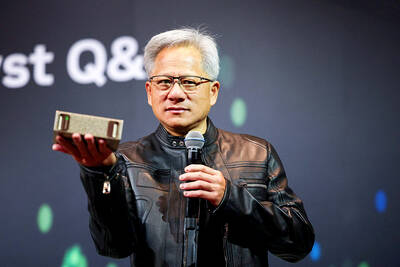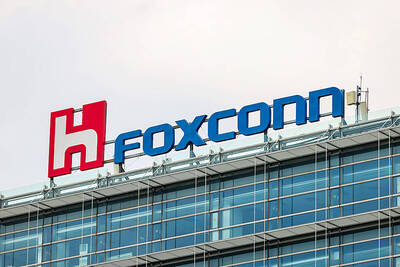After massive interest rate cuts, central banks worldwide including the US Federal Reserve and Taiwan’s central bank will maintain a loose monetary policy before the year’s end, Arjuna Mahendran, Hong Kong-based managing director and head of investment strategy for Asia at HSBC Private Bank, said yesterday.
“They will adopt a wait-and-see policy [as global economic fundamentals remain volatile],” he told an outlook briefing in Taipei.
The bank forecast a contraction of 1.9 percent for the global economy this year and 1.6 percent growth for next year.
Although the recession may be over or nearing an end, global equity markets including Taiwan’s main bourse will remain volatile in the next three months as uncertainties creep in, Mahendran said.
However, he expressed a positive view on global markets in a year’s time, saying financial markets around the world would be in a better position than now.
“Our recommendation is to trade the markets over the next three months and, once you see a big dip in stock or commodities markets, wait for the dip and buy for the longer term,” Mahendran said at his presentation, entitled “We should hasten slowly.”
The near-zero funding cost, strong money supply and low inflation and asset prices provide incentives for investors to look for investment opportunities, he said, adding that demand from both developed and developing countries is growing.
However, the question of when and whether US consumption, which Mahendran described as the only engine of the anticipated global economic recovery, will turn around was uncertain, along with rising unemployment, declining property prices and slow credit re-leveraging in the US.
The economist, however, argued that the US’ saving rate would stay at its current 5 percent level, up from almost zero percent in 2005, since the US stock market had bottomed out after March 9.
It was still unclear whether US consumption would turn around since property prices are expected to see “another 10 percent decline,” he said.
While new home sales have picked up in the past two months, the bank believed that the US housing market is likely to bottom out in six months.
When both share and property prices begin to rise, US consumers will start buying, said Mahendran, who is pessimistic that China will be able to ramp up its spending to make up for the loss of demand from the US over the next 10 years.
Mahendran said he was in favor of cash and US bonds over equities, commodities or Asian bonds in the next three months.
He disagreed with views that the US dollar would eventually collapse because of over-borrowing by the US government.
However, Mahendran agreed that the US dollar would further weaken to trade at between US$1.35 and US$1.45 to the euro by the end of this year, and favored Asian currencies such as the South Korean won and the Singapore dollar.

SEEKING CLARITY: Washington should not adopt measures that create uncertainties for ‘existing semiconductor investments,’ TSMC said referring to its US$165 billion in the US Taiwan Semiconductor Manufacturing Co (TSMC, 台積電) told the US that any future tariffs on Taiwanese semiconductors could reduce demand for chips and derail its pledge to increase its investment in Arizona. “New import restrictions could jeopardize current US leadership in the competitive technology industry and create uncertainties for many committed semiconductor capital projects in the US, including TSMC Arizona’s significant investment plan in Phoenix,” the chipmaker wrote in a letter to the US Department of Commerce. TSMC issued the warning in response to a solicitation for comments by the department on a possible tariff on semiconductor imports by US President Donald Trump’s

‘FAILED EXPORT CONTROLS’: Jensen Huang said that Washington should maximize the speed of AI diffusion, because not doing so would give competitors an advantage Nvidia Corp cofounder and chief executive officer Jensen Huang (黃仁勳) yesterday criticized the US government’s restrictions on exports of artificial intelligence (AI) chips to China, saying that the policy was a failure and would only spur China to accelerate AI development. The export controls gave China the spirit, motivation and government support to accelerate AI development, Huang told reporters at the Computex trade show in Taipei. The competition in China is already intense, given its strong software capabilities, extensive technology ecosystems and work efficiency, he said. “All in all, the export controls were a failure. The facts would suggest it,” he said. “The US

The government has launched a three-pronged strategy to attract local and international talent, aiming to position Taiwan as a new global hub following Nvidia Corp’s announcement that it has chosen Taipei as the site of its Taiwan headquarters. Nvidia cofounder and CEO Jensen Huang (黃仁勳) on Monday last week announced during his keynote speech at the Computex trade show in Taipei that the Nvidia Constellation, the company’s planned Taiwan headquarters, would be located in the Beitou-Shilin Technology Park (北投士林科技園區) in Taipei. Huang’s decision to establish a base in Taiwan is “primarily due to Taiwan’s talent pool and its strength in the semiconductor

French President Emmanuel Macron has expressed gratitude to Hon Hai Precision Industry Co (鴻海精密) for its plan to invest approximately 250 million euros (US$278 million) in a joint venture in France focused on the semiconductor and space industries. On his official X account on Tuesday, Macron thanked Hon Hai, also known globally as Foxconn Technology Group (富士康科技集團), for its investment projects announced at Choose France, a flagship economic summit held on Monday to attract foreign investment. In the post, Macron included a GIF displaying the national flag of the Republic of China (Taiwan), as he did for other foreign investors, including China-based